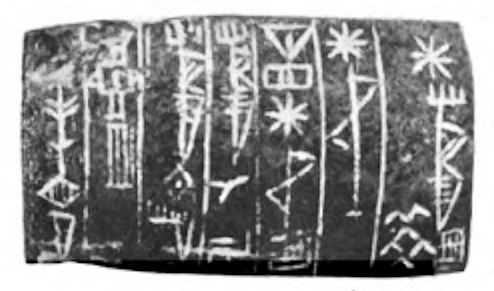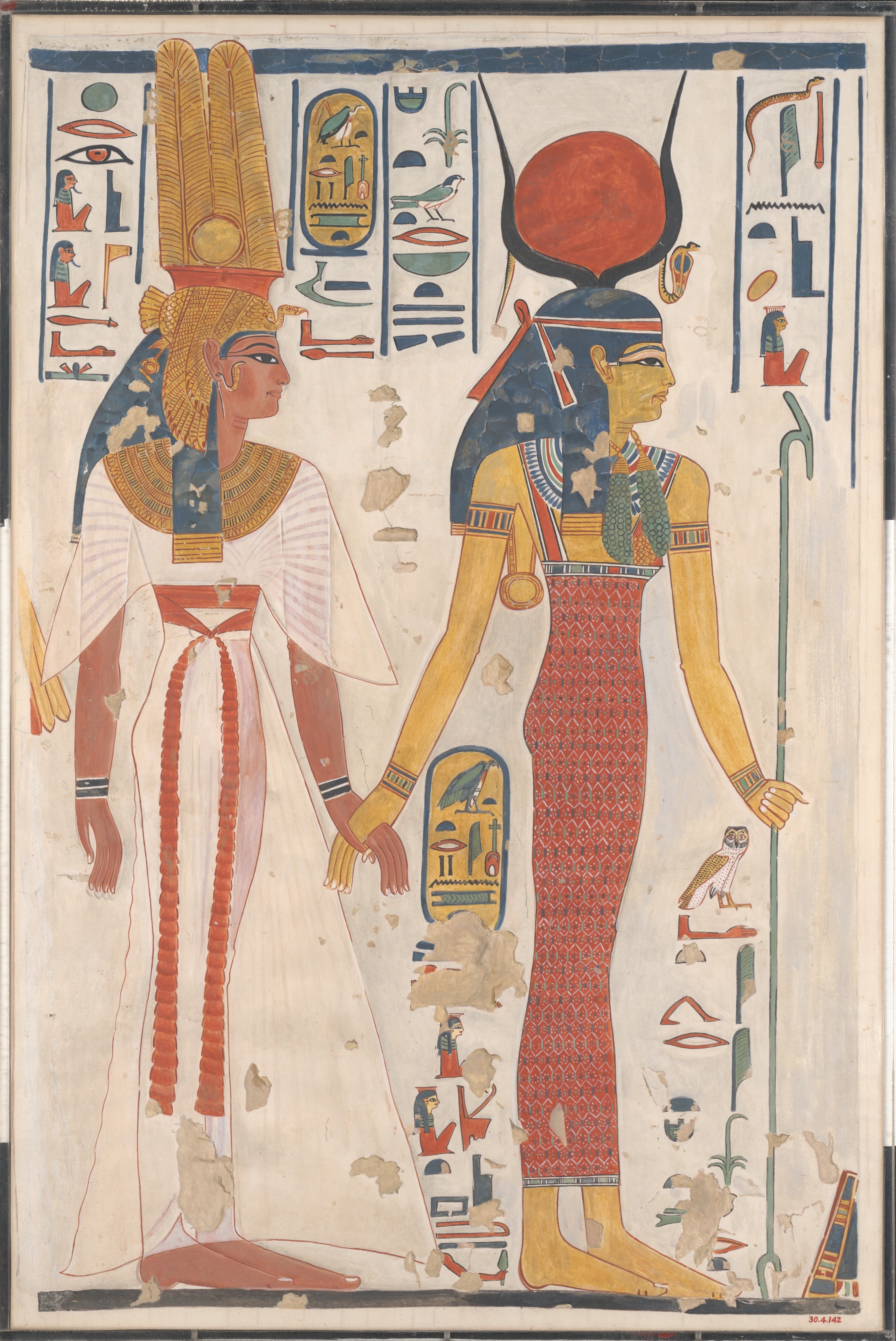|
Ainina And Danina
Ainina and Danina ( ka, აინინა და დანინა) or Ainina and Danana (აჲნინა და დანანა) are a pair of pre-Christian female deities worshipped in ancient Kartli — Iberia of the Classical sources — as claimed by the medieval Georgian chronicles. Beyond these later records no evidence is available for the existence of these cults.Rapp, Stephen H. (2003), ''Studies in Medieval Georgian Historiography: Early Texts And Eurasian Contexts'', p. 281. Peeters Publishers, According to the 11th-century ''History of the Kings and Patriarchs'', part of the compiled Georgian Chronicles, the idols of Ainina and Danana were erected by Saurmag, the second king of Kartli, on the road to the royal city of Mtskheta. The earlier, 7th–9th-century source ''Conversion of Kartli'', reports Saurmag was responsible for establishing the cult of Ainina, while his son-in-law and successor Mirvan created the idol of Danina. The reigns of Saurmag and Mi ... [...More Info...] [...Related Items...] OR: [Wikipedia] [Google] [Baidu] |
Paganism
Paganism (, later 'civilian') is a term first used in the fourth century by early Christians for people in the Roman Empire who practiced polytheism, or ethnic religions other than Christianity, Judaism, and Samaritanism. In the time of the Roman Empire, individuals fell into the pagan class either because they were increasingly rural and provincial relative to the Christian population, or because they were not '' milites Christi'' (soldiers of Christ).J. J. O'Donnell (1977)''Paganus'': Evolution and Use, ''Classical Folia'', 31: 163–69. Alternative terms used in Christian texts were '' hellene'', '' gentile'', and '' heathen''. Ritual sacrifice was an integral part of ancient Greco-Roman religion and was regarded as an indication of whether a person was pagan or Christian. Paganism has broadly connoted the "religion of the peasantry". During and after the Middle Ages, the term ''paganism'' was applied to any non-Christian religion, and the term presumed a belief in fal ... [...More Info...] [...Related Items...] OR: [Wikipedia] [Google] [Baidu] |
William Edward David Allen
William Edward David Allen OBE (6 January 1901 – 18 September 1973) was a British scholar, Foreign Service officer, fascist politician and businessman, best known as a historian of the South Caucasus—notably Georgia. Career Born into, on his father's side, an Ulster-Scots family in London and brought up in Hertfordshire, he was educated at Eton College (1914–1918), where he began to learn Russian and Turkish. He published his first book, ''The Turks in Europe'', when he was eighteen. He was a special correspondent for '' The Morning Post'' during the Greco-Turkish War (1919–1922) and the Rif War (1925). In the pre-Second World War years, he travelled a lot and conducted extensive research on the history of the peoples of the Caucasus and Anatolia. In 1930, along with Sir Oliver Wardrop, he founded the Georgian Historical Society; the Society published its own journal, ''Georgica'', dedicated to Kartvelian studies. His mother financed his personal enterprises unt ... [...More Info...] [...Related Items...] OR: [Wikipedia] [Google] [Baidu] |
Mythological Duos
Myth is a genre of folklore consisting primarily of narratives that play a fundamental role in a society. For scholars, this is very different from the vernacular usage of the term "myth" that refers to a belief that is not true. Instead, the veracity of a myth is not a defining criterion. Myths are often endorsed by religious (when they are closely linked to religion or spirituality) and secular authorities. Many societies group their myths, legends, and history together, considering myths and legends to be factual accounts of their remote past. In particular, creation myths take place in a primordial age when the world had not achieved its later form. Origin myths explain how a society's customs, institutions, and taboos were established and sanctified. National myths are narratives about a nation's past that symbolize the nation's values. There is a complex relationship between recital of myths and the enactment of rituals. Etymology The word "myth" comes from Ancient G ... [...More Info...] [...Related Items...] OR: [Wikipedia] [Google] [Baidu] |
Georgian Mythology
Georgian mythology ( ka, ქართული მითოლოგია, tr) refers to the mythology of pre-Christian Georgians ( /kʌrtˈvɛliənz/; Georgian: ქართველები, romanized: kartvelebi, pronounced �kʰaɾtʰvelebi, an indigenous Caucasian ethnic group native to Georgia and the South Caucasus. The mythology of the Kartvelian peoples is believed by many scholars to have formed part of the religions of the kingdoms of Diauehi, Colchis and Iberia. Later influences include the mythologies of the Ancient Greeks, Tuite, Kevin, ''The Meaning of Dæl, Symbolic and Spatial Associations of the South Caucasian Goddess of Game Animals'', Université de Montréal the Vainakh peoples and Iranians – the last-named comprising both the belief systems of the Northern Iranian nomad Scythians and Sarmatians (still preserved to some extent in the mythology of their descendants the Ossetians) and that of the Zoroastrian religion of the Ancient Persian empire, ... [...More Info...] [...Related Items...] OR: [Wikipedia] [Google] [Baidu] |
Ishtar
Inanna is the List of Mesopotamian deities, ancient Mesopotamian goddess of war, love, and fertility. She is also associated with political power, divine law, sensuality, and procreation. Originally worshipped in Sumer, she was known by the Akkadian Empire, Akkadians, Babylonian religion, Babylonians, and Assyrians as Ishtar. Her primary title is Queen of Heaven (antiquity), "the Queen of Heaven". She was the patron goddess of the Eanna temple at the city of Uruk, her early main religious center. In archaic Uruk, she was worshipped in three forms: morning Inanna (Inana-UD/hud), evening Inanna (Inanna sig), and princely Inanna (Inanna NUN), the former two reflecting the phases of her associated planet Venus. Her most prominent symbols include the Lion of Babylon, lion and the Star of Ishtar, eight-pointed star. Her husband is the god Dumuzid (later known as Tammuz), and her (attendant) is the goddess Ninshubur, later conflated with the male deities Ilabrat and Papsukkal. Inanna ... [...More Info...] [...Related Items...] OR: [Wikipedia] [Google] [Baidu] |
Mikheil Tsereteli
Prince Mikheil "Mikhako" G. Tsereteli also known as Michael von Zereteli ( ka, მიხეილ "მიხაკო" წერეთელი) (December 23, 1878 – March 2, 1965) was a Georgian prince, historian, philologist, sociologist and public benefactor. At different times he was a Marxist, an anarchist, and a nationalist. He is recognized as National Hero of Georgia. Life He was born in 1878, in a village Tskhrukveti (Imereti region of Western Georgia). His father was Prince Giorgi Tsereteli. His brother Vasil Tsereteli (1862–1938) was a famous Georgian physician, writer and public benefactor. In 1911 Mikheil Tsereteli graduated from Heidelberg University (Germany), and received a PhD degree in history in 1913. From 1914 to 1918, he was associate professor at Berlin University and Chairman of the Committee of Independent Georgia. In 1916 Tsereteli was a representative of Georgia in the Union of Nations in Lausanne, and in 1918-1919 Ambassador of the Democrat ... [...More Info...] [...Related Items...] OR: [Wikipedia] [Google] [Baidu] |
Anahita
Anahita is the Old Persian form of the name of an Iranian goddess and appears in complete and earlier form as ('), the Avestan name of an Indo-Iranian cosmological figure venerated as the divinity of "the Waters" ( Aban) and hence associated with fertility, healing and wisdom. There is also a temple named Anahita in Iran. Aredvi Sura Anahita is ''Ardwisur Anahid'' (اردویسور آناهید) in Middle and Modern Persian, and '' Anahit'' in Armenian. An iconic shrine sects of Aredvi Sura Anahita was, together with other shrine sects, "introduced apparently in the 4th century BCE and lasted until it was suppressed in the wake of an iconoclastic movement under the Sasanids.". The symbol of goddess Anahita is the Lotus flower. Lotus Festival (Persian: Jashn-e Nilupar) is an Iranian festival that is held on the end of the first week of July. Holding this festival at this time was probably based on the blooming of lotus flowers at the beginning of summer. The Greek and R ... [...More Info...] [...Related Items...] OR: [Wikipedia] [Google] [Baidu] |
Nicholas Marr
Nikolai Yakovlevich Marr (, ''Nikolay Yakovlevich Marr''; , ''Nikoloz Iak'obis dze Mari''; — 20 December 1934) was a Georgian-born historian and linguist who gained a reputation as a scholar of the Caucasus during the 1910s before embarking on his "Japhetic theory" on the origin of language (from 1924), now considered as pseudo-scientific, and related speculative linguistic hypotheses. Marr's hypotheses were used as a rationale in the campaign during the 1920–30s in the Soviet Union of introduction of Latin alphabets for smaller ethnicities of the country. In 1950, the "Japhetic theory" fell from official favour, with Joseph Stalin denouncing it as anti-Marxist. Biography Marr was born on in Kutaisi, Georgia (then part of the Russian Empire). His father, James Montague Marr (1793–1874), was an Englishman of possible Scottish descent who moved to the Caucasus in 1822 to work as a trader, before moving into horticulture, and worked with the Gurieli family of Guria. His m ... [...More Info...] [...Related Items...] OR: [Wikipedia] [Google] [Baidu] |
Mirian I Of Iberia
Mirian I ( ka, მირიან I) was a king (''mepe'') of Iberia who reigned in the 2nd century BC. An adopted son of his father-in-law King Sauromaces I, he was a Persian-born prince but governed over Iberia as a member of the Pharnavazid dynasty. His reign coincided with the emergence of large geopolitical changes associated with the slow collapse of the Seleucid Empire and the rise of Parthia, as well as the increasing power of the neighboring Kingdom of Armenia. While he faced a violent North Caucasian invasion, he repelled it successfully and fortified the Dariali Pass, which would remain Georgia's first line of northern defense until the 19th century. Life Origins The medieval '' Georgian Chronicles'', telling the history of the ancient Kingdom of Iberia, remains vague on the origins of Mirian. In the book, he is named a "Nebrotid" along with his descendants, an indication of his Persian origin as "Nebrot" was the Georgian name for Biblical figure Nimrod, the mythi ... [...More Info...] [...Related Items...] OR: [Wikipedia] [Google] [Baidu] |
Goddess
A goddess is a female deity. In some faiths, a sacred female figure holds a central place in religious prayer and worship. For example, Shaktism (one of the three major Hinduism, Hindu sects), holds that the ultimate deity, the source of all reality, is Mahadevi (Supreme Goddess) and in some forms of Tantric Shaivism, the pair of Shiva and Shakti are the ultimate principle (with the goddess representing the active, creative power of God). Meanwhile, in Vajrayana, Vajrayana Buddhism, ultimate reality is often seen as being composed of two principles depicted as two deities in union (Yab-Yum, yab yum, "father-mother") symbolising the non-duality of the two principles of perfect wisdom (female) and skillful compassion (male). A single figure in a monotheistic faith that is female may be identified simply as god because of no need to differentiate by gender or with a diminutive. An experiment to determine the effect of psychedelics on subjects composed of leaders from diverse religio ... [...More Info...] [...Related Items...] OR: [Wikipedia] [Google] [Baidu] |
Conversion Of Kartli (chronicle)
The ''Conversion of Kartli'' ( ka, მოქცევაჲ ქართლისაჲ ''moktsevay kartlisay'', Asomtavruli: ႫႭႵႺႤႥႠჂ ႵႠႰႧႪႨႱႠჂ, ) is the earliest surviving medieval Georgian historical compendium, independent from The Georgian Chronicles, the major corpus historicum of medieval Georgia. Written in the 10th century, this chronicle follows the history of (a core Georgian region known to the [...More Info...] [...Related Items...] OR: [Wikipedia] [Google] [Baidu] |





